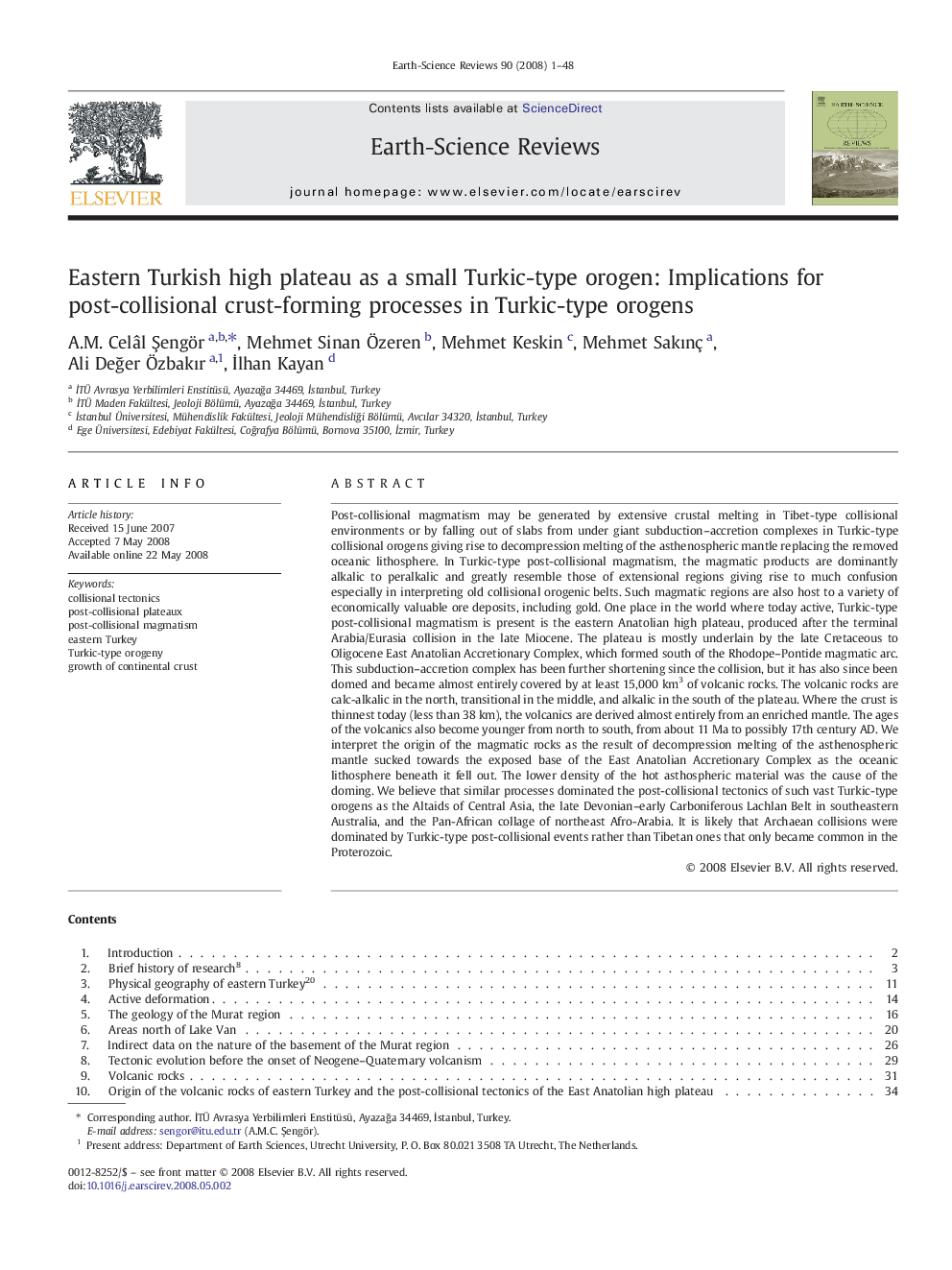| Article ID | Journal | Published Year | Pages | File Type |
|---|---|---|---|---|
| 4726264 | Earth-Science Reviews | 2008 | 48 Pages |
Post-collisional magmatism may be generated by extensive crustal melting in Tibet-type collisional environments or by falling out of slabs from under giant subduction–accretion complexes in Turkic-type collisional orogens giving rise to decompression melting of the asthenospheric mantle replacing the removed oceanic lithosphere. In Turkic-type post-collisional magmatism, the magmatic products are dominantly alkalic to peralkalic and greatly resemble those of extensional regions giving rise to much confusion especially in interpreting old collisional orogenic belts. Such magmatic regions are also host to a variety of economically valuable ore deposits, including gold. One place in the world where today active, Turkic-type post-collisional magmatism is present is the eastern Anatolian high plateau, produced after the terminal Arabia/Eurasia collision in the late Miocene. The plateau is mostly underlain by the late Cretaceous to Oligocene East Anatolian Accretionary Complex, which formed south of the Rhodope–Pontide magmatic arc. This subduction–accretion complex has been further shortening since the collision, but it has also since been domed and became almost entirely covered by at least 15,000 km3 of volcanic rocks. The volcanic rocks are calc-alkalic in the north, transitional in the middle, and alkalic in the south of the plateau. Where the crust is thinnest today (less than 38 km), the volcanics are derived almost entirely from an enriched mantle. The ages of the volcanics also become younger from north to south, from about 11 Ma to possibly 17th century AD. We interpret the origin of the magmatic rocks as the result of decompression melting of the asthenospheric mantle sucked towards the exposed base of the East Anatolian Accretionary Complex as the oceanic lithosphere beneath it fell out. The lower density of the hot asthospheric material was the cause of the doming. We believe that similar processes dominated the post-collisional tectonics of such vast Turkic-type orogens as the Altaids of Central Asia, the late Devonian–early Carboniferous Lachlan Belt in southeastern Australia, and the Pan-African collage of northeast Afro-Arabia. It is likely that Archaean collisions were dominated by Turkic-type post-collisional events rather than Tibetan ones that only became common in the Proterozoic.
